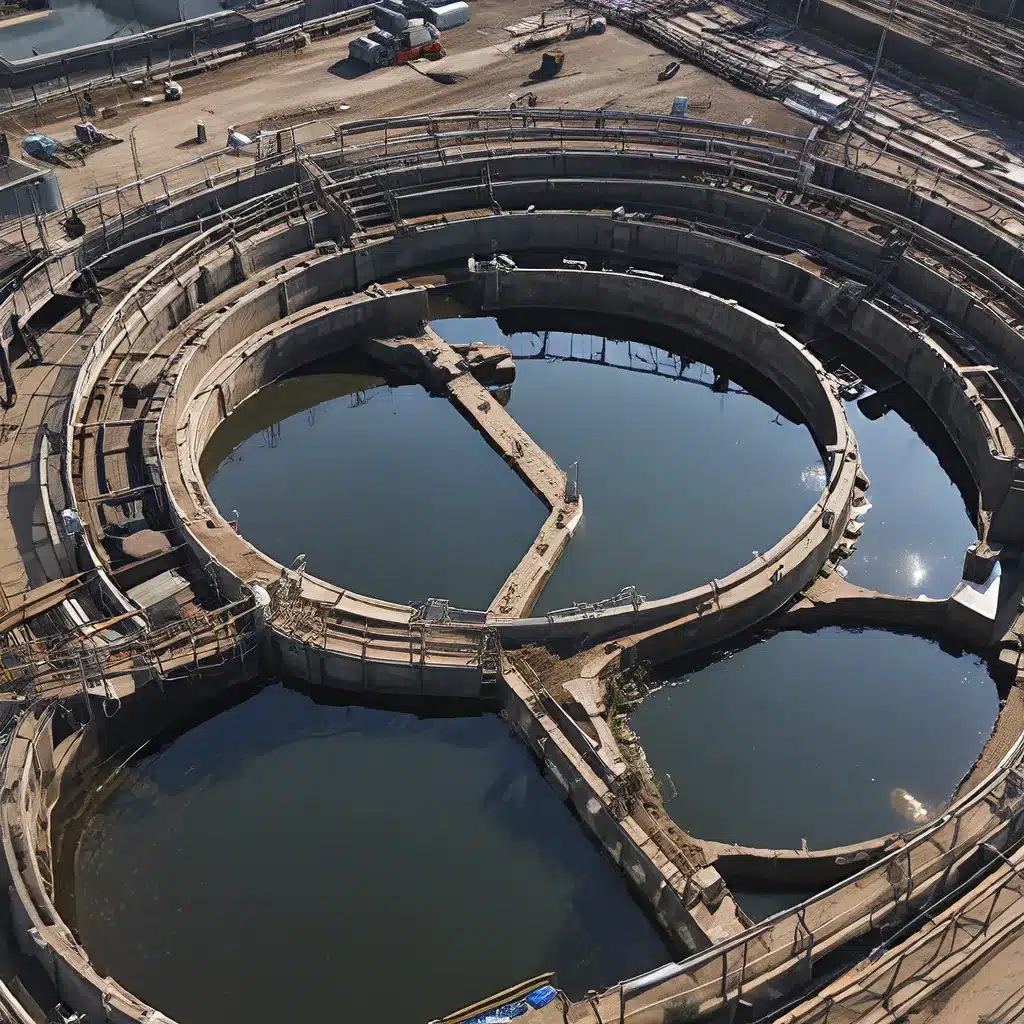
In a world that’s increasingly grappling with water scarcity, environmental degradation, and the depletion of natural resources, the circular economy approach to wastewater management offers a promising solution. Rather than treating wastewater as mere waste, this forward-thinking model embraces it as a valuable resource, unlocking a world of untapped potential.
Unlocking the Potential of Wastewater
Let’s be honest, wastewater is often seen as a necessary evil – something we’d much rather forget about. But what if I told you that this “waste” could actually be a goldmine? That’s the core idea behind the circular economy approach to wastewater treatment.
Veolia North America puts it best: “Water recycling is a keystone for climate resilience and sustainable urban water management.” By recovering and repurposing the valuable resources embedded in wastewater, we can not only reduce our environmental footprint but also create new revenue streams.
Imagine a world where wastewater isn’t just flushed away, but instead transformed into a reliable source of water, energy, and nutrients. That’s the promise of the circular economy – a closed-loop system where nothing goes to waste, and everything is reused, recycled, or repurposed.
The Circular Water Economy in Action
So, how does this circular water economy actually work? Let’s take a closer look at some real-world examples that are leading the way.
In Gothenburg, Sweden, the city is maximizing water usage and turning waste into valuable resources. Through advanced wastewater treatment and resource recovery processes, they’re able to extract nutrients like phosphorus and nitrogen, which can then be used as fertilizers for agriculture. The water itself is also treated and recycled, reducing the demand for freshwater and easing the strain on natural water bodies.
But Gothenburg is just one piece of the puzzle. Across the globe, communities are embracing the circular water economy and harnessing the power of wastewater to support sustainable development.
In Sacramento, California, the Harvest Water Project is taking water recycling to new heights. By treating wastewater and using it for irrigation, they’re not only reducing freshwater demand but also nurturing the soil and protecting local ecosystems from harmful nutrient runoff.
And in San Francisco, innovative on-site water reuse systems are revolutionizing how buildings and communities manage their water resources. By treating and reusing greywater and rainwater, these systems are helping to create water-independent communities and mitigate the impacts of water scarcity.
The Benefits of the Circular Water Economy
The circular water economy isn’t just a nice idea – it’s a proven, effective solution that delivers a host of benefits:
-
Water Security: By recycling and reusing water, we can reduce our reliance on freshwater sources, ensuring a more reliable and sustainable water supply.
-
Environmental Protection: Repurposing wastewater and recovering valuable resources like nutrients helps us minimize pollution and restore natural ecosystems.
-
Agricultural Productivity: Using recycled water for irrigation supports soil health and boosts crop yields, contributing to global food security.
-
Resource Efficiency: Extracting energy, nutrients, and other resources from wastewater reduces waste and creates new revenue streams.
-
Climate Resilience: Circular water systems are better equipped to withstand the impacts of climate change, such as droughts and water scarcity.
Embracing the circular water economy isn’t just good for the planet – it’s also a smart business move. By positioning your organization as a leader in sustainable water management, you can tap into a growing market, attract eco-conscious customers, and future-proof your operations.
The Road Ahead: Challenges and Opportunities
Of course, transitioning to a circular water economy isn’t without its challenges. Implementing new technologies, overcoming regulatory hurdles, and changing deeply ingrained mindsets can all be daunting tasks. But the potential rewards far outweigh the risks.
As Robert Brears, author and water management expert, points out, the circular water economy is a “game-changer” in how we manage our most precious resource. By embracing this innovative approach, we can unlock a world of possibilities – from sustainable agriculture to resilient urban infrastructure.
So, what are you waiting for? It’s time to dive in and explore the transformative power of the circular water economy. Who knows, your organization might just be the next trailblazer in this exciting new frontier.
Remember, the journey to a more sustainable future starts with a single step. Why not make that step towards Inland Waters – a leader in the field of wastewater treatment and resource recovery? Together, we can rewrite the script on how we manage our water resources, one flush at a time.


